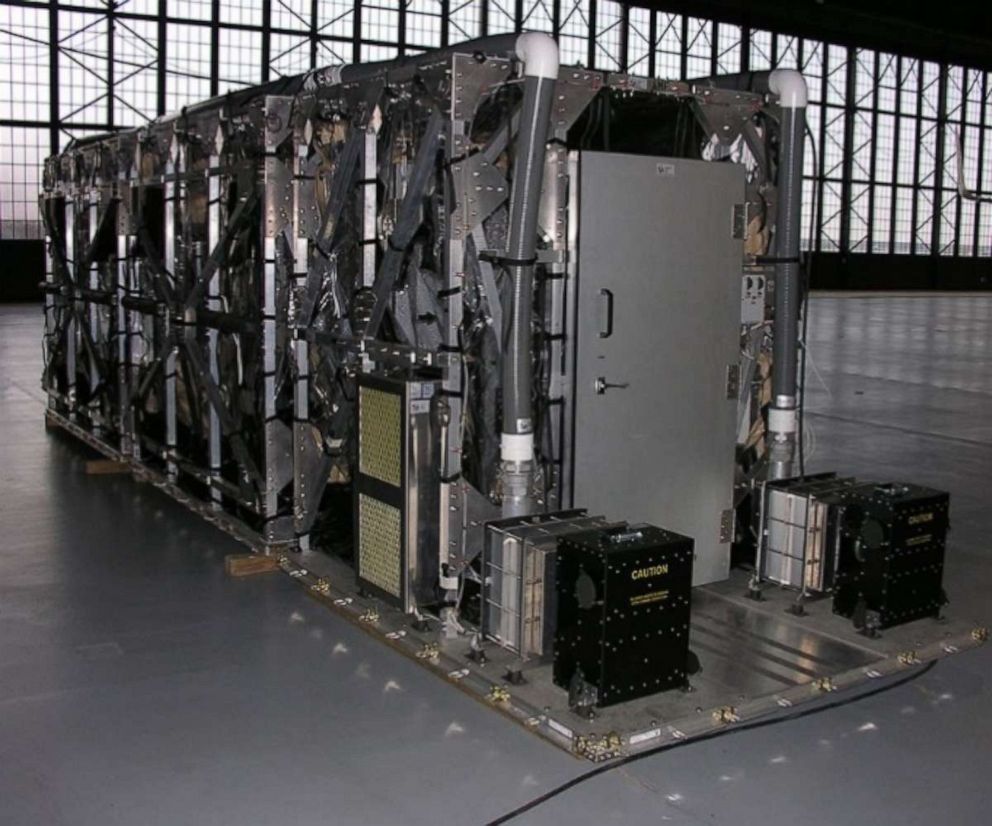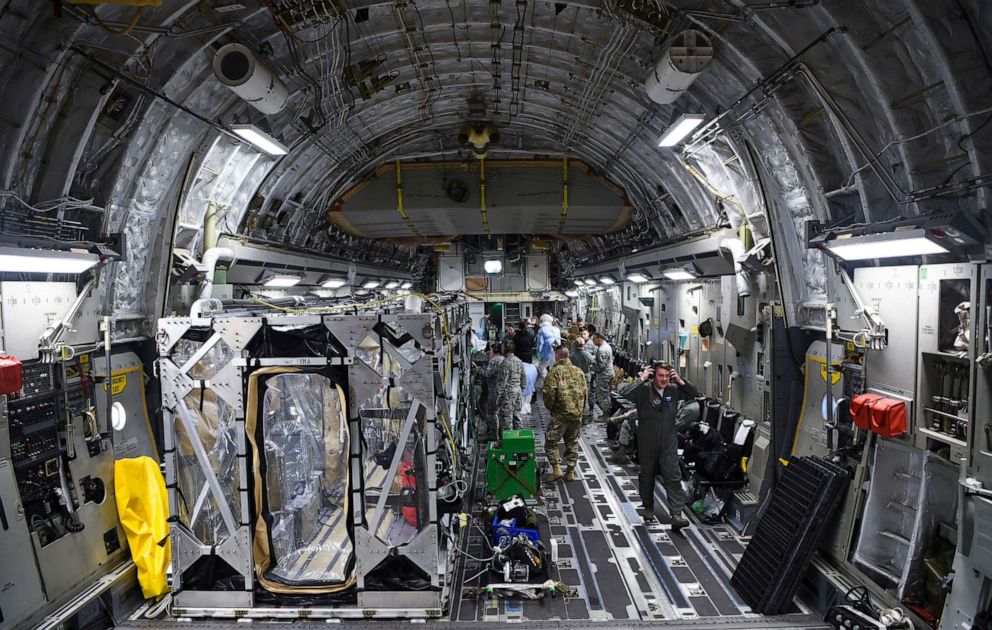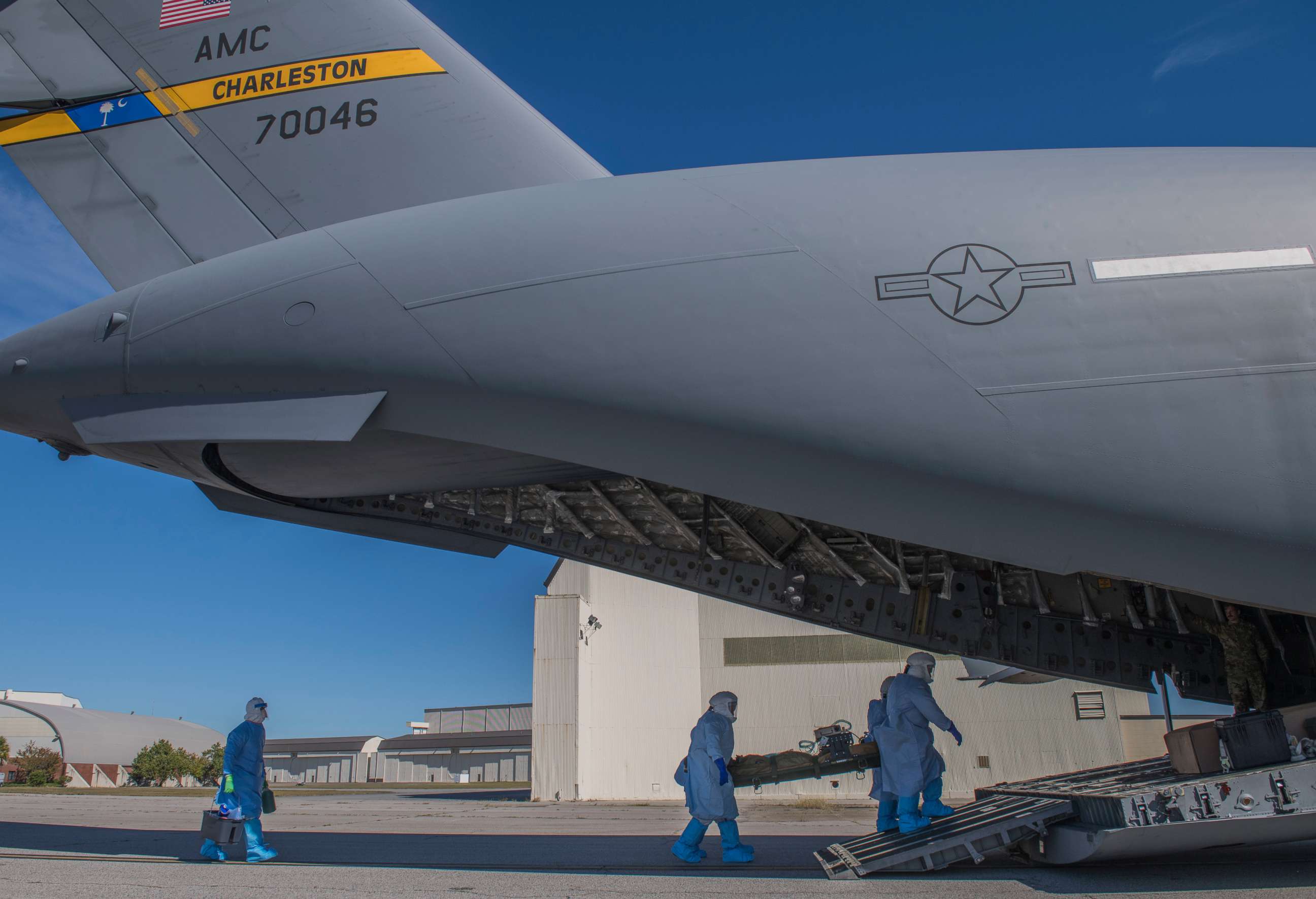This isolation system is how the Air Force will transfer coronavirus patients
The Transport Isolation System was first implemented after the Ebola outbreak.
The Air Force is training medical professionals to operate an isolation system used to safely transport patients with infectious diseases aboard military aircraft, as coronavirus cases continues to soar around the world.
The Transport Isolation System is an infectious disease containment unit that can be secured inside aircraft to minimize the risk of contagion to the aircrew while at the same time allowing for medical care. As training on the system continues stateside, one such system has already been pre-positioned in Europe in case a service member with coronavirus needed to be evacuated.
"While treatment of patients in place is always the preferred option, we anticipate there will likely be circumstances in which such care will not be available, and the best option will be to transport the patient to alternative facilities," Lt. Gen. Jon Thomas, Deputy Commander of Air Mobility Command, said on Friday.
While the system has not yet been used by the Air Force to transfer a coronavirus patient, Thomas said they are prepared to utilize the system today "in small numbers," calling such bio-containment units "the best means to transport a COVID-positive patient."

A key concern when transporting any patient with an infectious disease is the need to protect the aircrew for future missions.
“Right now, in the midst of this global pandemic, we have forces in harm’s way around the world,” said Col. Leslie Wood, Air Mobility Command en route care medical director. “Because of the requirements of transporting personnel with infectious diseases like COVID-19, we can’t use our traditional methods of transport without risking the medical crew in the back of the plane, and the rest of the crew in the front. And, if we lose these crews, we lose operational capability.”
Currently, medical professionals from the Air Force's School of Aerospace Medicine are training medics at Joint Base Charleston in South Carolina to operate the TIS -- a training which normally lasts three days, according to the Air Force.
Medics learn how to properly put on personal protective equipment, follow waste management procedures, simulate in-flight patient care, and familiarize themselves with equipment and inventory, among other activities.

The system was originally implemented after the Ebola outbreak in 2014. As Defense Department personnel responded to the crisis in Africa, the Air Force needed a way to ensure anyone who became infected with the disease could get proper treatment during evacuation.
“We initially started the ( Transport Isolation System) program thinking of Ebola, and that was likely to be a one to two patient movement -- very low volume of patients,” Wood said. “So right now, we’re shifting that response completely to adapt to higher volume transport and more enduring yield so over the next several months as opposed to shorter durations.”

The system consists of one antechamber module and two isolation modules -- for a total of two patients per unit -- and can be secured on C-130H, C-130J, and C-17 aircraft. The antechamber module provides a space for medical personnel to safety decontaminate and remove personal protective equipment. A C-17 can hold two TIS units for a total of four patients.
While the system is already operational, the Defense Department is currently developing another system called the Portable Bio-Containment Module which is similar to a shipping container and larger than the Transport Isolation System.
According to Air Mobility Command, the Portable Bio-Containment Module could address a range of diseases without modification and carry twice as many patients as TIS, but additional testing, evaluation, and validation is needed before that system can be deployed.




